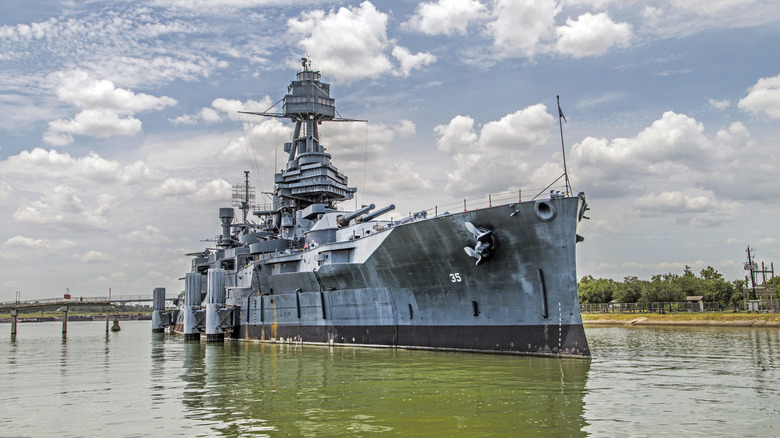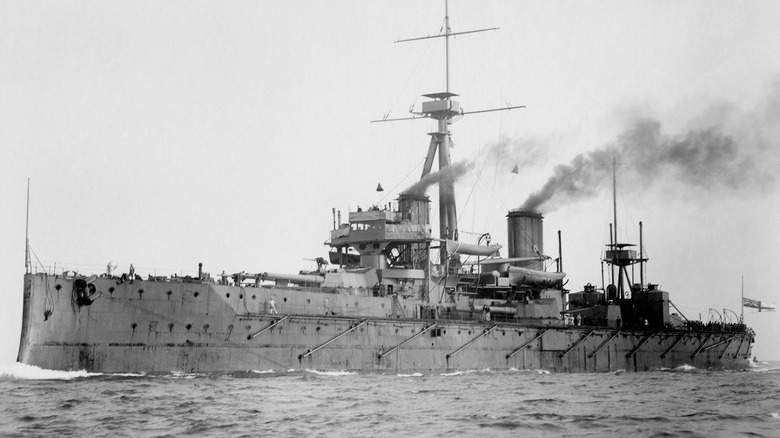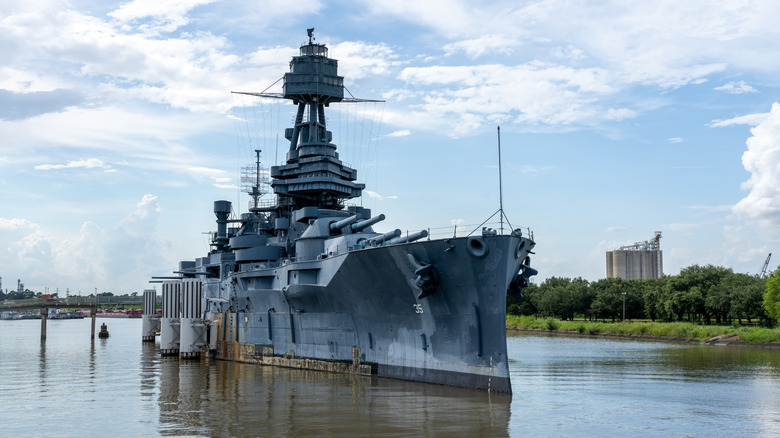What Is A 'Dreadnought' And What Does It Mean In Military Ships?
Everyone knows that the military has some of the most advanced gadgets, vehicles, and weaponry on the planet. From some of the biggest submarines ever made to missiles and rockets capable of destroying entire settlements in the blink of an eye, the power of military forces is generally not something to be trifled with. Recent years have witnessed significant advancements in armaments across the board, highlighted by the introduction of weapons like the advanced F-35 Lightning II, which have fundamentally transformed warfare.
These weapons instill fear in many, generating a psychological impact that often secures victories more effectively than their actual deployment. Yet, in discussions about some of the most feared vessels to ever haunt a theater of war, one cannot overlook the dreadnoughts, the colossal ships that dominated oceans and seas during the first half of the 20th century.
A dreadnought was a type of battleship that was not only colossal but also matched its size with heavy armor and multiple massive guns of the same size for its main armament. These ships were also quite fast, especially considering their size, and could engage in combat at long ranges. Let's take a deep dive into the world of military dreadnoughts, exploring what inspired their design, what made them so unique and equally feared, and whether any are still operational today.
The HMS Dreadnought sets the standard
While formidable warships called dreadnoughts have existed since the 16th century, the British Royal Navy launched the most iconic one in 1906. This particular monster was a turbine-powered vessel that measured 526 feet and had a top speed of 21 knots. The ship, aptly named the HMS Dreadnought, would be the seventh British ship to bear the dreadnought name, with the first being a galleon that served from 1573 to 1648. The seventh Dreadnought was well-armored and equipped with ten 12-inch guns, four torpedo tubes, and 24 3-inch quick-firing guns, along with other artillery to confront the enemy.
The HMS Dreadnought set the standard for what a dreadnought should be. For the next four decades, similar battleships would strive to embody its style and presence. From the massive guns that could engage from a distance thanks to their raw firepower and accuracy to the thick armor that allowed them to stay in conflict for longer, these ships would rule the waters through to the mid-20th century.
America's Dreadnoughts
Dreadnoughts struck fear in many sailors because of their size, speed, and the fact that they could accurately put massive holes in a vessel from a distance. It comes as no surprise that other nations would build their own ships that could achieve the same. The U.S.'s first dreadnoughts were the USS South Carolina (BB-26) and USS Michigan (BB-27), known as the South Carolina Sisters. These dreadnoughts featured eight massive broadside guns as opposed to the HMS Dreadnought, which had 10.
However, they also sported superfiring turrets at their centerlines, a revolutionary addition that would become a staple in many ships down the line. Although these two ships were groundbreaking in their era, the Navy would sell them for scrap in 1924. Over the years, the template put forward by the likes of the HMS Dreadnought and South Carolina Sisters would be improved upon, resulting in beasts such as the USS Texas (BB-35), the only surviving dreadnought today.
The USS Texas was a New York-class ship commissioned in 1914. The ship was active for 34 years, fighting in World War I and World War II, and assuming multiple roles, including training Navy officers and periodically serving as a fleet and division flagship. The ship has served in multiple theaters of war, including the Pacific and the Mediterranean Sea.


